Vending Operation & Tasks Management
Optimise Operational Efficiency with Streamlined Tasks Management
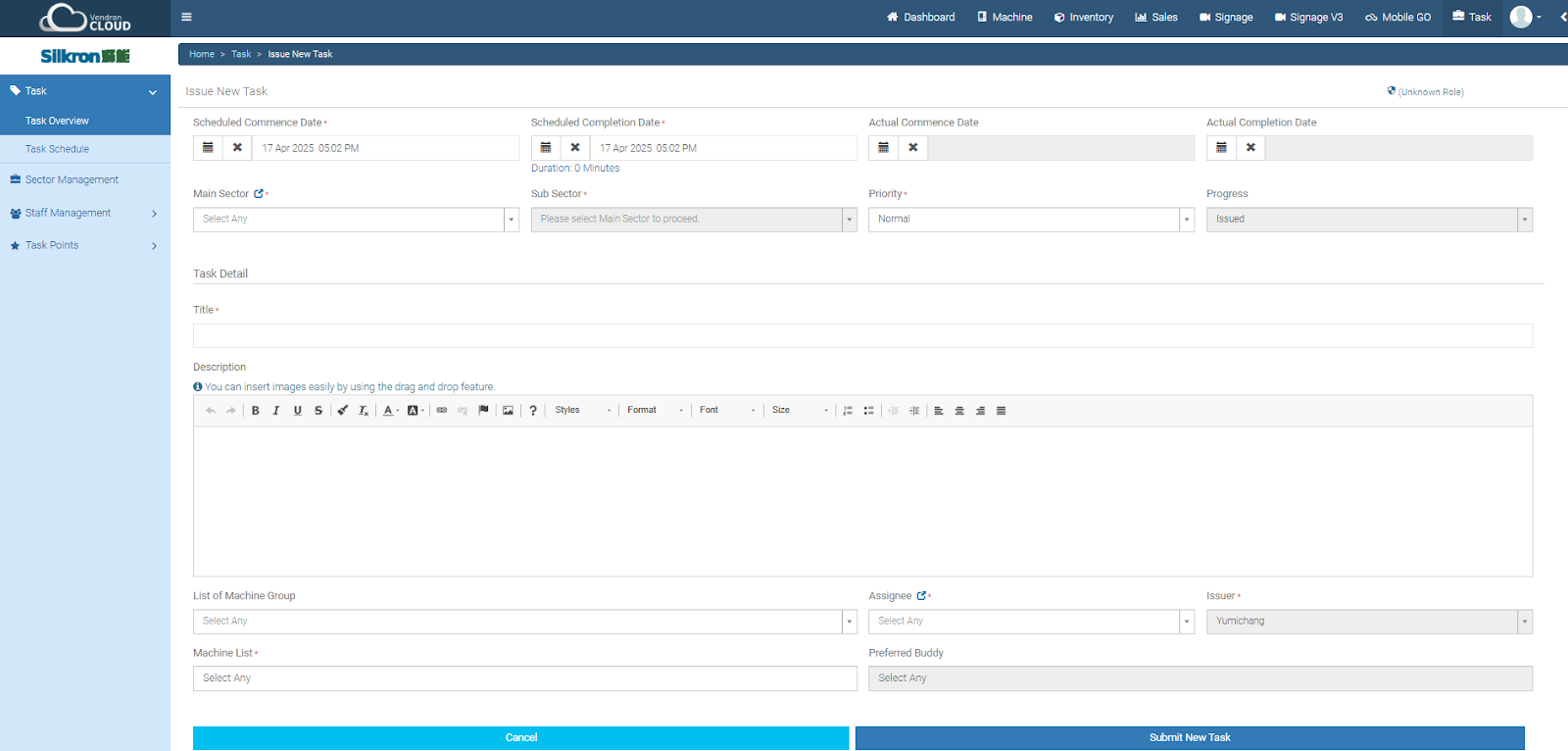
How Does It Work ?
-
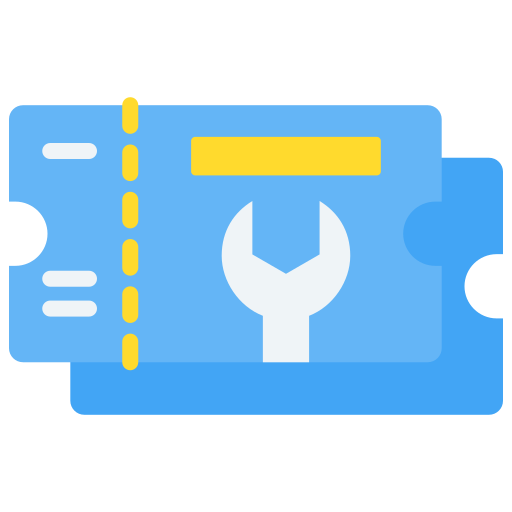
Step 1: Task Creation
When an issue arises or a job is required to be performed, whether it's a malfunction, restocking need, or regular maintenance, operators can instantly generate a Task through Vendron Cloud. The system will generate a unique Task Number for the request, ensuring that it can be tracked throughout the execution process. The status of the Task will become Issued.
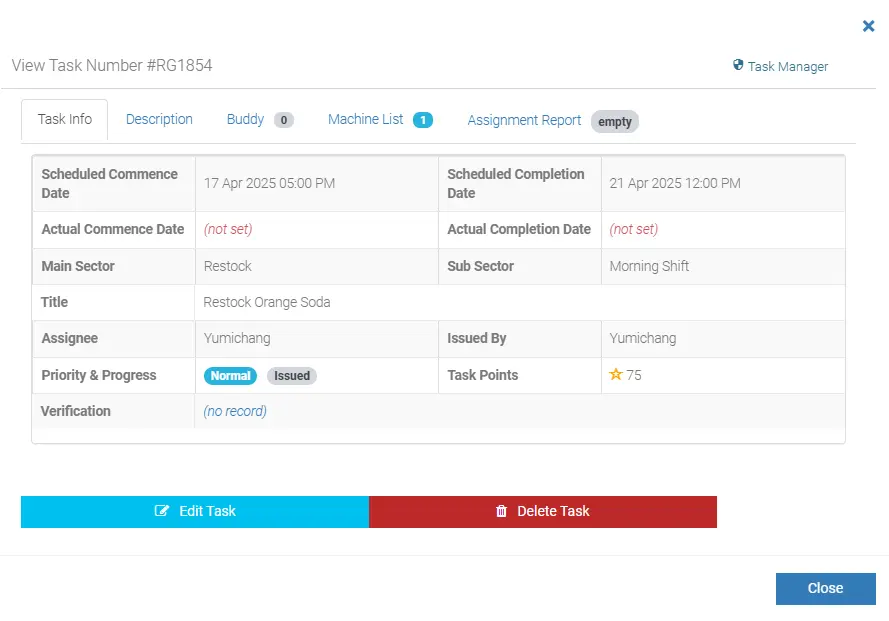
-
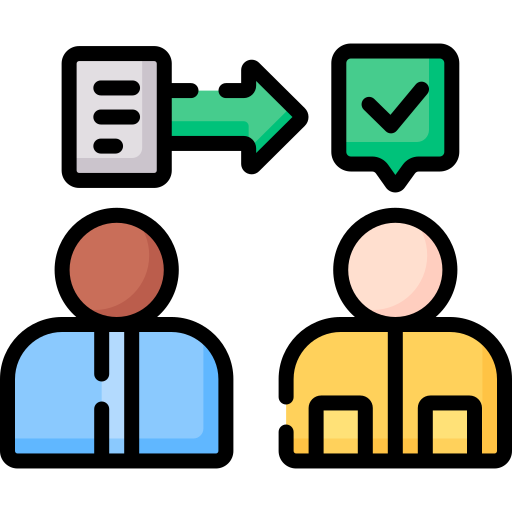
Step 2: Assigning Tasks
Once the Task is issued, the system categorizes and prioritizes the request based on predefined criteria such as Issue Type, Severity, and Impact. Operators can assign it to a specific technician or crew based on workload, expertise, and availability to ensure that it is handled efficiently and by the right personnel.
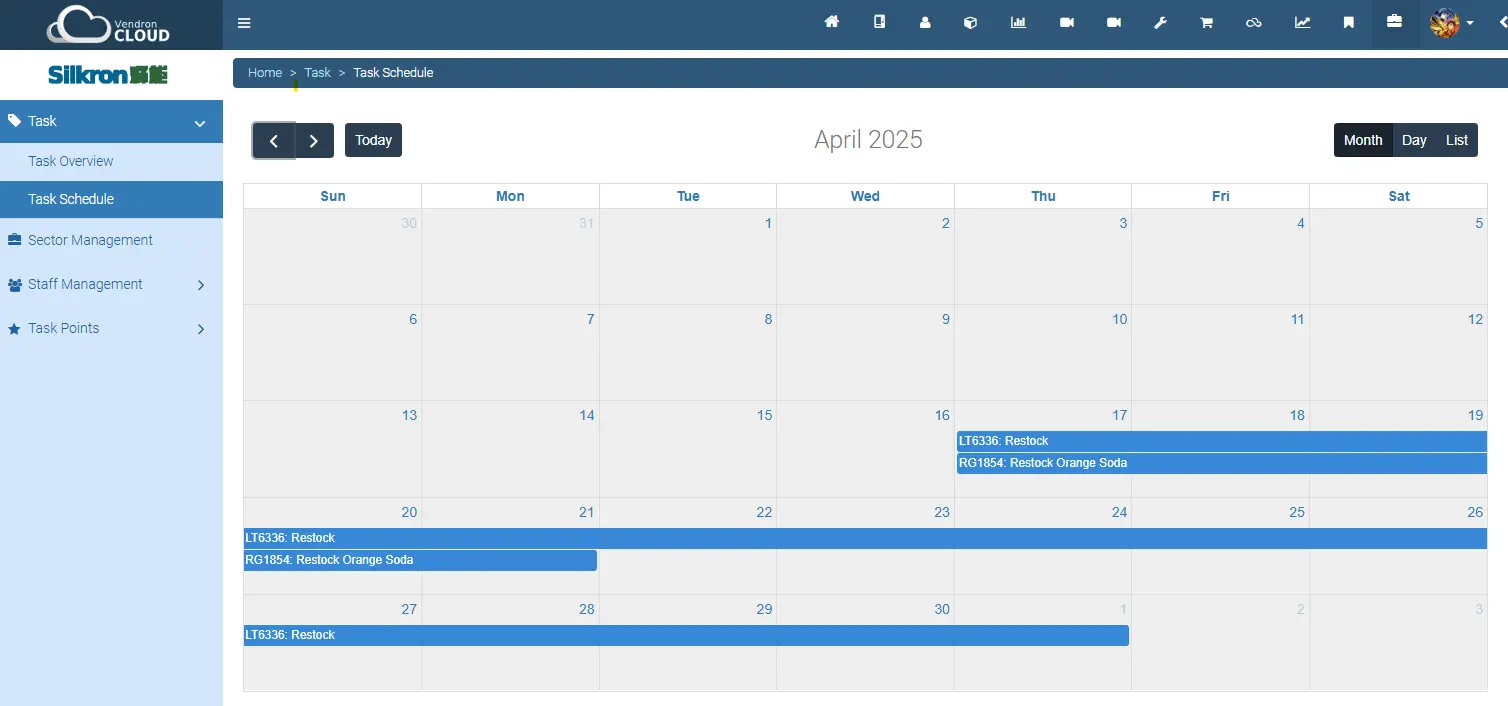
-
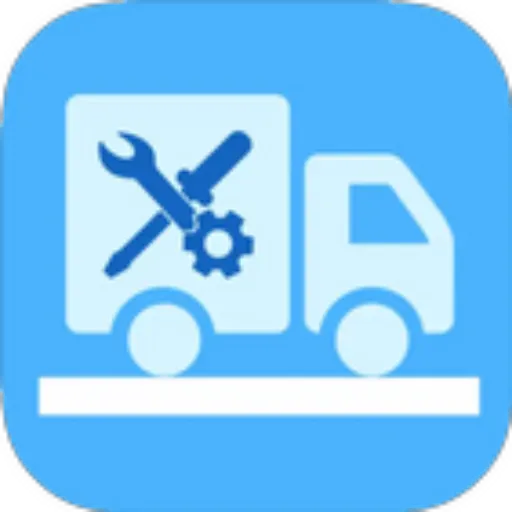
Step 3: Instant Mobile Notifications & Acknowledgment
The assigned crew will receive an instant notification via Vendron Op, alerting them of the new Task. To confirm receipt and understanding of the Task, the crew must acknowledge receipt of the Task within Vendron Op, ensuring they are informed and can act on the Task timely without delay. The status of the Task will become Started.
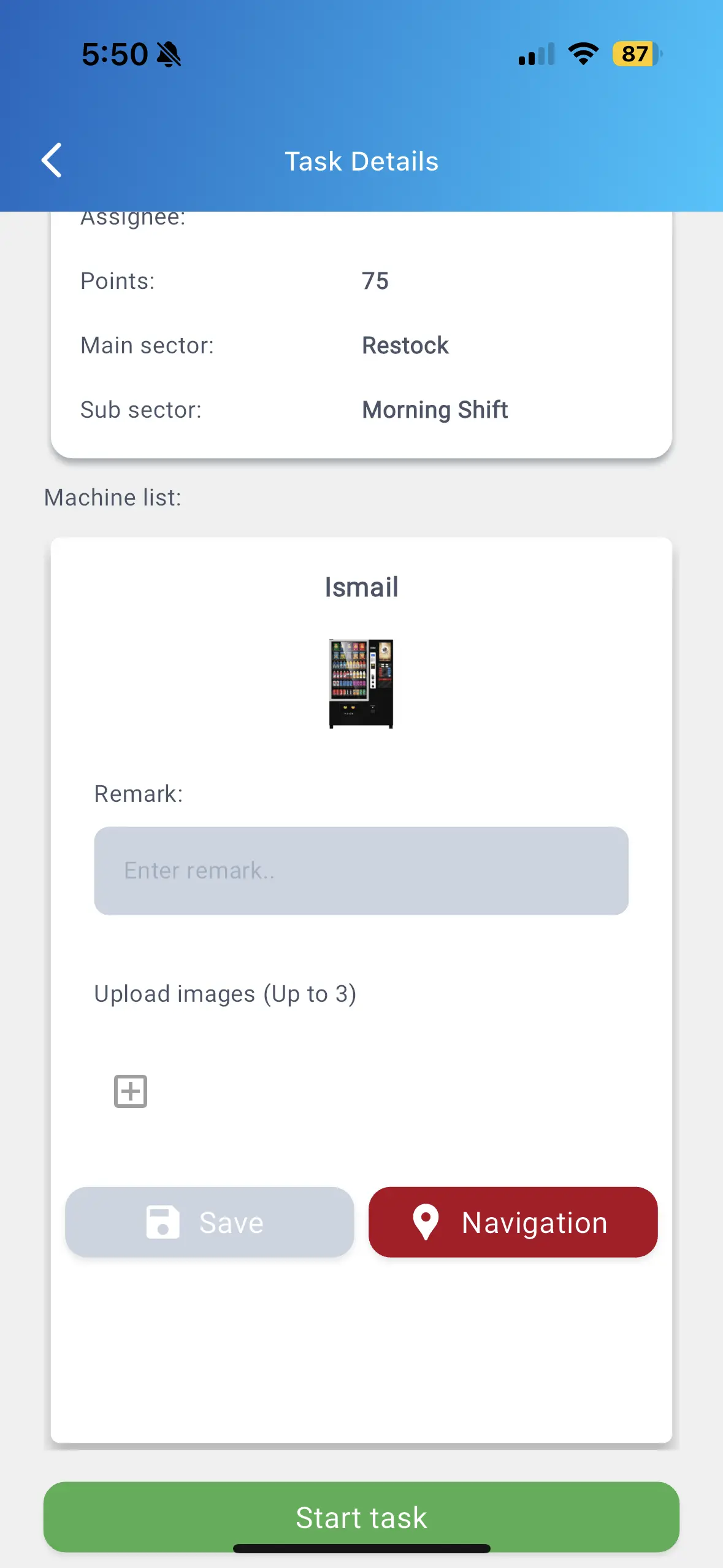
-

Step 4: Completion and Reporting
Upon task completion, the crew updates the Task status as 'Pending Verify' to keep the operator informed. Crews can submit detailed reports including photos outlining the actions taken, challenges encountered, and final resolution, providing transparency and documentation of the Task.
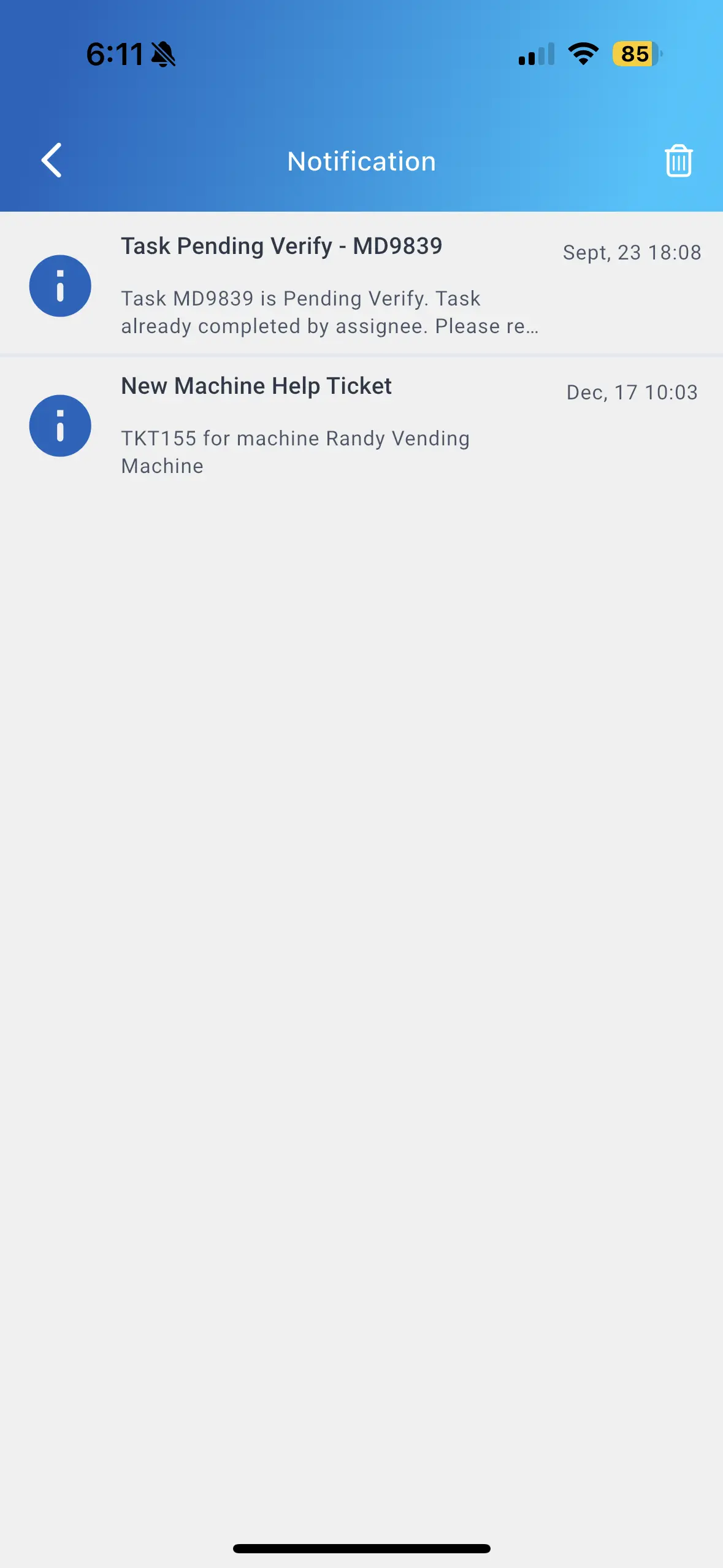
-

Step 5: Verification and Service Points
After the Task is marked as “Pending Verify”, the requestor or a supervisor is notified to verify the assignment report. The requestor can either approve the completion or reject it if additional work is required. When the Task is marked as Complete, the assigned crew earns the service points as a reward for their performance.
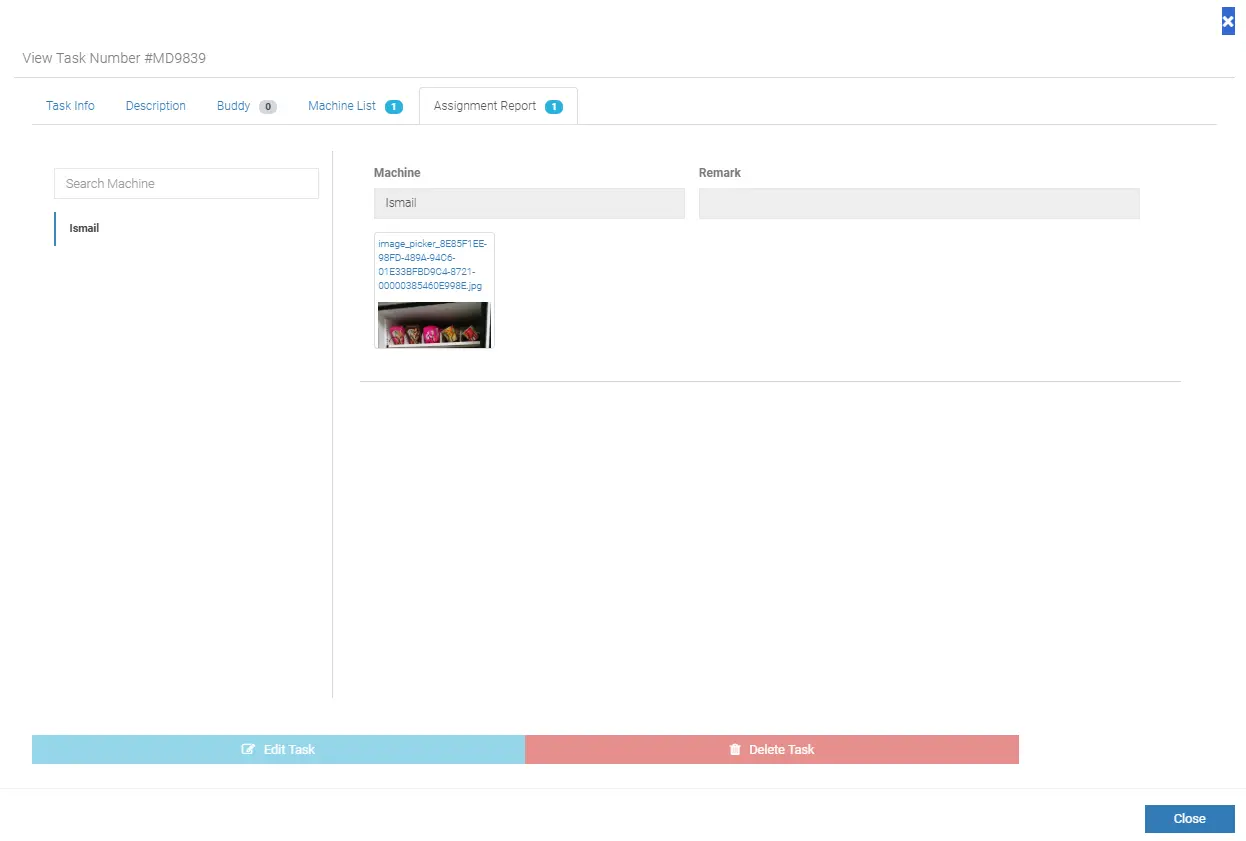
Key Benefits of the Tasks Feature
-
Enhanced Operational Efficiency
Providing a centralized system for reporting, tracking and resolving issues and jobs. Tasks are assigned systematically based on predefined rules, ensuring the right person gets the right tasks at the right time. Reduces delays by automating workflows, ensuring optimal resource utilization, and streamlining tasks delegation and execution to prevent duplicate work and inefficiencies. -
Improved Accountability and Transparency
Provide a clear and auditable trail as every Task is logged with a clear ownership record, ensuring that responsibilities are well-defined and measurable. Allowing to track who created, assigned, updated, and completed each Task to prevent missed deadlines by enabling supervisors to monitor Tasks progress in real time, while enhancing compliance by ensuring all activities are recorded and traceable. -
Instant Communication and Acknowledgments
Enable immediate notifications and acknowledgements between the requestor and the task assignee to ensure the issues are addressed promptly. Reduces miscommunication by maintaining a centralized log of all interactions related to any Task. Allowing team members to enhance collaboration by commenting, sharing updates, and providing feedback in real time. -
Tasks Prioritization
Tasks can be categorized and prioritized based on urgency and importance, ensuring high-priority issues are resolved first. This will help the operation teams focus on mission-critical tasks rather than getting overwhelmed by lower-priority activities. This ensures efficient resource allocation, reducing bottlenecks and maximizing productivity. -
Comprehensive Reporting and Insights
It allows task assignees to submit detailed reports directly through the system, providing transparency on task progress. These reports capture actions taken, challenges faced, and solutions implemented, creating a knowledge base for future reference. It provides data-driven insights for continuous process improvement and better decision-making. -
Incentives for Timely Completion by Earning Service Points
The system awards the task assignees with service points for timely completion to encourage quick and efficient resolution of tasks. These points can be tracked and used as performance metrics for employees, fostering a results-driven work environment. It enables the organization management to implement incentive programs such as bonuses, recognition, or career growth opportunities based on earned points.




